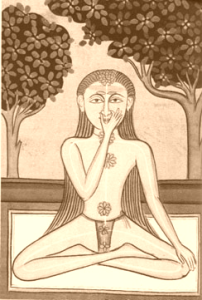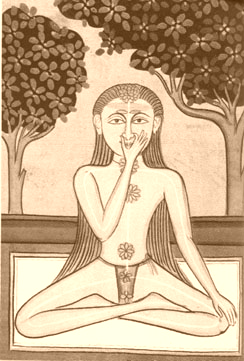Breath of Fire: Kapalabhati Pranayama
Kapalabhati is a very active, forced exhalation with a passive inhalation. To exhale, the belly quickly pumps into the spine forcing the air out of the nose (like trying to blow out a candle through you nose). Place a hand on your belly to feel the belly actively pumping. Play with the tempo (30-40 exhalations/60 seconds), but keep a steady rhythm. Try starting with 2-3 rounds of 15 exhalations. Then, gradually increase the exhalations, as you feel comfortable.
Nostril Alternating Breath: Nadi Sodhana Pranayama
Close off your right nostril with the thumb and inhale into the left nostril. Next, close off your left nostril with your forefinger (or another finger), open the right nostril by removing your thumb and exhale through the right nostril. Keep your fingers where they are and inhale into the right nostril. Close the right nostril with your thumb, open the left, and exhale through the left nostril. Repeat. This is one “round”. Try doing 4 “rounds” when you begin. As you feel more comfortable, try 10 or 15 rounds.

Three Part Breath: Dirga Pranayama
Dirga Pranayama is called the three part breath because you are actively breathing into three parts of your abdomen. The first position is the low belly (just below the belly button), the second position is the low chest (belly and lower half of the rib cage), and the third position is the upper chest and low throat (just above the top of the sternum). The breath is continuous, inhaled and exhaled through the nose. The inhalation starts in the first position, the low belly; then moves to the second position, the low chest; then to the third position, the upper chest and low throat. The exhalation starts in the low throat and upper chest, moves to the low chest, and finishes in the low belly. Rest your hands on the individual positions to feel the breath rising and falling through each position. When you start practicing, you may want to individually isolate the movement in each position, using the hands. When you have a good feel for the breath moving in and out of each position, begin to practice without your hands.

 Follow
Follow
Nice posting. Do you know about these pranayama books?
http://www.YogaVidya.com/freepdfs.html
Thanks.
The Shiva Samhita by James Mallinson is a very good book.